Over the years, there have been quite a few movies, thrillers mostly, concerning strange denizens lurking beneath cities in the underground system -- among them Luc Besson's Subway, Michael Apted's Extreme Measures and the recent Hungarian picture Kontroll.
One of the most celebrated, something of a cult movie in the early 1970s, is Death Line, in which inspector Donald Pleasence investigates a series of strange disappearances around Russell Square Tube Station, London, and discovers that cannibals have been breeding in an abandoned tunnel since 1892, when their ancestors were trapped while building an underground station beneath the British Museum.
Christopher Smith's directorial debut Creep is deeply influenced by Death Line.
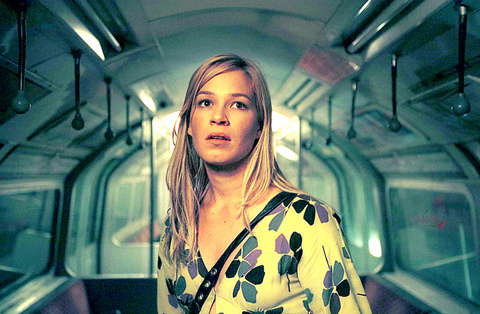
PHOTO COURTESY OF TWENTIETH-CENTURY FOX.
The unending horror show that is the London underground tube system is still an under-used resource for splatter pictures, which is why this strange Anglo-German co-production grabs attention -- for a while at any rate.
It is a very, very yucky slasher film starring German actress Franka Potente (from Run Lola Run). It implies that there is a direct connection between the London tube's justly notorious Northern Line and the stinkiest sewer tunnels, and also a secret but semi-disused subterranean hospital lab for experimenting on children.
Those of us who have to travel on the Northern Line have suspected as much for years.
Potente plays a wild child funlover who's heading to a VIP party in London where she hopes -- oh the dreams of youth! -- to shag George Clooney. But instead she gets stuck, in the immortal words of the Jam, down in the tube station at midnight. She finds that all the gates are closed, the platform is utterly deserted and the place is swarming with rats, which are allowed to romp around the passenger concourses at night.
Traumatized, she climbs aboard a creepy ghost train that carries her to all sorts of gore and mayhem. It all gets very nasty and explicit.
Creep has some intriguing location work and interesting ideas, but nausea and boredom soon overtake the chills.
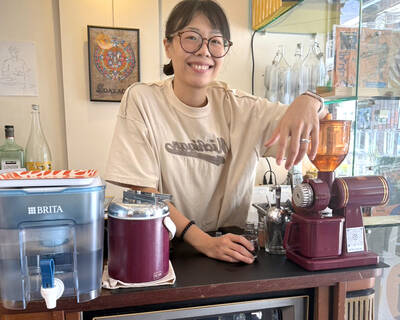
Cheng Ching-hsiang (鄭青祥) turned a small triangle of concrete jammed between two old shops into a cool little bar called 9dimension. In front of the shop, a steampunk-like structure was welded by himself to serve as a booth where he prepares cocktails. “Yancheng used to be just old people,” he says, “but now young people are coming and creating the New Yancheng.” Around the corner, Yu Hsiu-jao (饒毓琇), opened Tiny Cafe. True to its name, it is the size of a cupboard and serves cold-brewed coffee. “Small shops are so special and have personality,” she says, “people come to Yancheng to find such treasures.” She
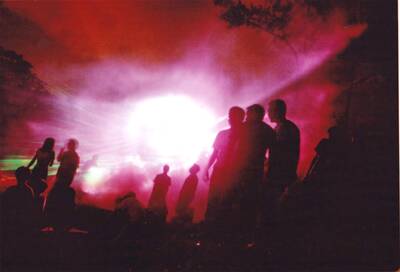
In July of 1995, a group of local DJs began posting an event flyer around Taipei. It was cheaply photocopied and nearly all in English, with a hand-drawn map on the back and, on the front, a big red hand print alongside one prominent line of text, “Finally… THE PARTY.” The map led to a remote floodplain in Taipei County (now New Taipei City) just across the Tamsui River from Taipei. The organizers got permission from no one. They just drove up in a blue Taiwanese pickup truck, set up a generator, two speakers, two turntables and a mixer. They
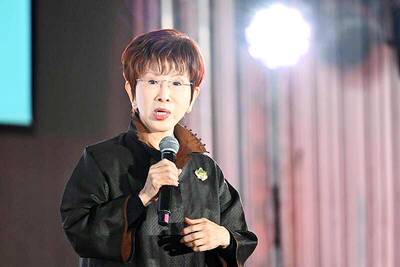
Former Chinese Nationalist Party (KMT) chairwoman Hung Hsiu-chu’s (洪秀柱) attendance at the Chinese Communist Party’s (CPP) “Chinese People’s War of Resistance Against Japanese Aggression and the World Anti-Fascist War” parade in Beijing is infuriating, embarrassing and insulting to nearly everyone in Taiwan, and Taiwan’s friends and allies. She is also ripping off bandages and pouring salt into old wounds. In the process she managed to tie both the KMT and the Democratic Progressive Party (DPP) into uncomfortable knots. The KMT continues to honor their heroic fighters, who defended China against the invading Japanese Empire, which inflicted unimaginable horrors on the
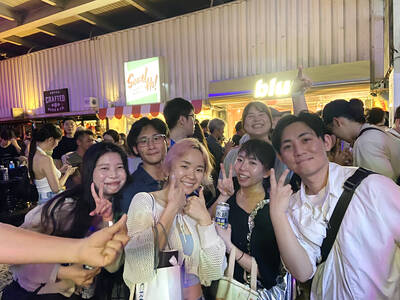
Hannah Liao (廖宸萱) recalls the harassment she experienced on dating apps, an experience that left her frightened and disgusted. “I’ve tried some voice-based dating apps,” the 30-year-old says. “Right away, some guys would say things like, ‘Wanna talk dirty?’ or ‘Wanna suck my d**k?’” she says. Liao’s story is not unique. Ministry of Health and Welfare statistics show a more than 50 percent rise in sexual assault cases related to online encounters over the past five years. In 2023 alone, women comprised 7,698 of the 9,413 reported victims. Faced with a dating landscape that can feel more predatory than promising, many in